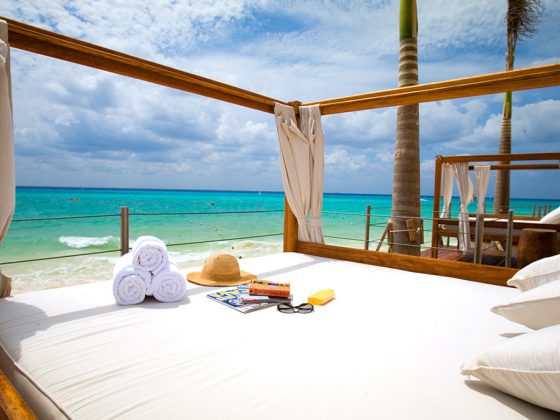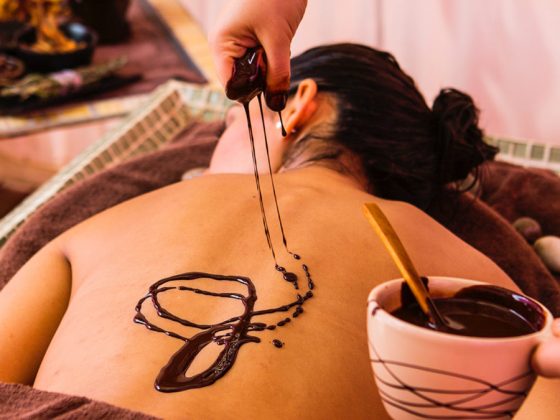Some years ago at Cap Juluca, then-G.M. Guish Guishard capped a delightful dinner with some pre-Castro Montecristo No. 2s and a bottle of 1952 Rhum Clément. The slightly shriveled stogies had aged surprisingly well, but the rum… ah, the rum was still youthful, vigorous, and utterly sublime. The elixir commingled on the palate with the savory tobacco, channeling both Hemingway and a Caribbean long vanished in the smoke of time. It was, pardon the pun, a spiritual experience.
Though it originated 3,000 years ago in China, Egypt, and India, rum is virtually synonymous with Caribbean history. Columbus planted sugarcane (indigenous to Papua New Guinea) on his second West Indies voyage in 1493; the distilled product was first labeled kill-devil and served to plantation slaves to alleviate their squalid existence. As grog, it became part of the British Navy’s rations, again to appease harsh conditions. Yet by the 18th century, the ruling classes had anointed rum a substitute for brandy, while sugar and molasses had become the lucrative cornerstone of Caribbean economy and trade – the infamous Rum Triangle indirectly leading via draconic taxation to the American Revolution. Afterward, in an early example of supporting local product, whiskey distillers began to flourish and despite Prohibition’s risk-taking rumrunners, demand for rum didn’t revive until the 1950s.
Though the word’s etymology remains shrouded in mystery (derived either from saccharum, Latin for sugar, or rumbullion, old Devon dialect for “firewater” and its usual result, “uproar”), today rum is rocketing in popularity again. The fastest-growing white spirit in the U.S. market, it played a key role in the last decade’s cocktail culture renaissance, with such legendary libations as the daiquiri and mojito trendy anew. But it’s more than just the base for frothy, frou frou concoctions in Day-Glo™ colors with umbrellas. Aged (viejo or añejo in Spanish, vieux in French) and estate-bottled reserve rums feature the balance, complexity, and smoothness of fine single malts and cognacs, suited to sipping straight from a snifter, perhaps warmed slightly (one ice cube will also concentrate the aromatics).
Despite the wide range of types (white to gold/dark to aged, even spice- or fruit-infused) and lack of uniform production standards, the base process is identical: distillation of sugarcane juice or its byproducts (molasses). Sugarcane variety, terroir (a French term embracing all conceivable growing conditions, including microclimate, soil, altitude, water, drainage), and distinct/ive production techniques (such as using either natural organic or proprietary propagated yeast strains – often jealously guarded secrets over generations) play major factors in determining aromatics and flavor profiles. Uniquely designed, traditional small-batch copper pot stills extract spirits à la Cognac or Scotch from fermented mash, producing a denser, more flavorful alcohol that includes esters and congeners such as fusel oil. Other producers prefer the more modern continuous-still method favored by Bourbon makers, the higher-proof distillation yielding purer, less flavorful alcohols (aging and blending then boost the flavor profile). Some brands like Appleton Estate blend the two à la Armagnac.
The aging process/barrel selection is crucial. The woods (usually recycled and charred, from American white oak to French Limousin) impart deeper color, intense fragrance, complex aromas, and persistent yet mellower flavors thanks to their tannins, cellulose, and flavonoids. The oak’s permeability enables the water and alcohol to diffuse into the atmosphere, minimizing the rum’s sharpness. In tropic climates, up to 20% of the barrel’s contents can be lost annually to evaporation (this is dubbed the “angel’s share”), which results in the rum maturing more quickly than Scotch or Cognac. Some producers offset the evaporation by topping a barrel from its neighbors of the same vintage.
Still, aging remains a touchy topic. Since after a decade barely 10 gallons might remain in a 55-gallon barrel, Cruzan Rum’s master distiller Gary Nelthropp jokingly wonders “How our competitors have so much 25-year-old rum.” Anthony Dias Blue, noted wine/spirits columnist and Executive Director of the prestigious San Francisco World Spirits Competition observes, “Long oak exposure adds immeasurably to [their] depth and complexity,” yet aging remains controversial in other ways. Some producers contend that more than eight years is unnecessary, even detrimental. Like all wood-aged spirits and wines, rum benefits from a certain period in the cask, developing creamier texture and more complex aromatics. But each individual barrel peaks at a different point and begins absorbing harsher oak attributes, leading to imbalance.
Though the final product is literally a matter of taste, the blender’s skill becomes paramount, especially since a sugarcane crop varies from harvest to harvest. Blending teams conduct regular quality checks to ensure stylistic consistency, and monitor aging closely since there can be unexpected variations after five years in barrel. Appleton Estate Master Blender Joy Spence calls it “more an art than a science” while quipping that the “secret formula would stump the CIA.” She uses many different types and styles of rum “to create a blend as an artist uses different colors to create a painting.”
Which underscores the fact that rum is a product of culture and tradition as well as Nature; each island, indeed each company (many owned by multi-generational families) takes pride in its distinctiveness. Martinique is a perfect example. Its Rhum Agricole uses the entire crop – and only during the brief harvest as opposed to year-round, a pricier process than Industriale (utilizing molasses). In less meticulous hands, this imparts more herbal, vegetal, mineral characteristics. But France awarded Martinique a coveted Appellation d’Origine Controlée, a seal of approval attesting to the origin and authenticity of each bottle of rum à la French wine certification; producers must comply with legal restrictions on cane varieties, yield, distillation, aging, and production zone, without adding preservatives or coloring. Meanwhile, Puerto Rico rums by law must age a minimum of 1 year in charred white American oak barrels, imparting balance and smoothness to the blanco; though a few are aged a decade or more, most are released younger, as are many Cuban and Dominican rums which tend to be lighter and more delicate. Small wonder distillers resist any efforts at standardization, let alone defining what precisely constitutes rum
So next time after dinner toast Caribbean culture: Lift a glass of premium rum and lift your spirits. Pre-embargo Cubano optional.
TASTING NOTES
Here’s a partial list of top local choices. Pyrat (Anguilla); Cavalier, English Harbour (Antigua); Cockspur, Mount Gay, Malibu (Barbados); Pusser’s (BVI); Tortuga (Cayman Islands); Barcelo, Bermudez, Brugal, Matusalem (D.R.); Clarke’s Court, Westerhall (Grenada); Bellevue, Damoiseau, Musée du Rhum, Séverin (Guadeloupe); Botrán, Zacapa (Guatemala); El Dorado, Port Morant (Guyana); Barbancourt (Haiti); Appleton Estate, Myer’s (Jamaica); J. Bally, Clément, Depaz, J.M., Niesson (Martinique); Flor de Caña (Nicaragua); Carta Vieja (Panama); Bacardi, Don Q, Barrilito (Puerto Rico); Cruzan (St. Croix); Brinley Gold (St. Kitts); Bounty (St. Lucia); Angostura, 10 Cane (Trinidad); Diplomático, Pampero, Santa Teresa (Venezuela).
Angostura 1919 (Trinidad; $35-$40; 40%; www.angostura.com). This blend of light and heavy molasses-based rums, aged at least 8 years then hand-blended and re-casked, is arguably superior to the older but less integrated 1824 – especially at barely half the price. The fetching old gold hue and confectionery factory bouquet (buttery caramel popcorn, toffee, honey, raisins, prunes, coconut milk, chocolate laced with smoke and spice) promise a Willy Wonka treat. The deceptively soft smooth entry, however, hints at the Dahl/Burton/Depp darker side with nougat, cocoa, vanilla bean, toasted almond, and dried apricot edged with mesquite and peppery mace. The happy-ending finish lingers, light and delightful, without bite. A guilty pleasure: the gustatory equivalent of watching The Bachelor on your barcalounger.
Appleton Estate 21 Year-Old (Jamaica; $129.99; 43%; www.appletonrumus.com). What a seductive robe: exceptionally clear amber with golden, ruddy and faint greenish reflections dancing around the glass. Then the multi-layered nose invites total surrender: a Carmen Miranda fruit basket with quince, pear, apricot, banana, raspberry, and the house’s patented orange peel and Madagascar vanilla, countered by peat, pecan, and whiffs of menthol and anise. Viscous and velvety on the palate, it’s almost like drinking liquefied hazelnut crème brûlée alongside the finest Blue Mountain coffee. Lush lusciousness is perfectly balanced by pipe tobacco on the lengthy finish. Its finesse and muscularity suggest an exceptional integration of wood and alcohol.
Barbancourt Réserve du Domaine (Haiti; $35; 43%; www.barbancourt.net). Selected from the Gardére family’s private stock, this limited-quantity estate rum is pressed from hand-cut locally grown cane, double-distilled in pot stills, then aged in white-oak barrels. Haiti is celebrated for the visual arts, and the gleaming copper color with golden flashes evokes Renaissance gilt. The beauteous bouquet recalls Spanish brandies: vanilla, Brazil nut, and praline yield to fleeting wisps of peach and dried apricot, framed by ghostly notes of cherry tobacco and chocolate. A silken entry leads to a voluptuous yet vigorous mouth-feel, with heavenly honeyed accents mingling with stone fruit, with a forever finish, the fade hinting at espresso-tinged molasses. Scrumptious and remarkable value.
Brugal Extra Viejo Gran Reserva (Dominican Republic; $25; 40%; www.brugalrum.com). I love the company’s 12-year Siglo de Oro and impossible-to-find 30-year-old Único, but this classy and classic rum is irresistibly affordable. The comely caramel color exquisitely catches the light, with a golden halo; the nose is equally celestial with honeysuckle, hazelnut, toffee, fig, and treacle. These continue on the heavenly entry, the clover honey and baked apple anchoring a medium-framed yet bountiful Botticelli body. Earthy yet ethereal, the lengthy finish impeccably integrates oak and alcohol, with butterscotch, pistachio, dark chocolate, tobacco, and pepper.
Captain Morgan Spiced Private Stock (Puerto Rico; $30; 40%; www.captainmorgan.com). Remember when you were a kid, anticipating S’mores at the campfire accompanied by ghost stories? This is the adult alcoholic equivalent, right from the lovely clear umber robe with tantalizing orange highlights. Ah, what aromas: clove, vanilla bean, peach brown betty, and yes, marshmallow, chocolate and graham cracker. The smoothly dense entry gradually tapers into a slightly herbaceous, sweet potato, leathery, pipe tobacco mid-palate and aftertaste that aren’t at all unpleasant, providing a bracingly masculine note that prevents the rum from cloying, before a smoked almond and pepper fade.
Rhum Clément Founder’s Cuvée Homère (Martinique; $84.99; 44%; www.rhums-clement.com). This top-of-the-cellar master’s selection incorporates the best vintage rums of last 15 years, each contributing its own flavor profile and nuanced complexity. It features a captivating orange-crimson glow that plays teasingly with the light; long Cindy Crawford legs form upon swirling. Refined and restrained, the white-glove whistle-clean, surprisingly dry bouquet recalls Highland single malt with peat, brine, golden currant, floral, cacao, butter, and dried stone fruit notes accompanied by hints of oak and cane. The Cognac-like, slightly phenolic entry simply underscores its seriousness. Impeccably balanced with well-integrated tannins on the palate, milk chocolate, orange peel, honey-roasted peanuts, and brown sugar commingle with classic Agricole notes of fresh tobacco, pepper, caraway, fennel, and fresh-mown dewy grass. A svelte, sophisticated sipper.
Rhum Clément X.O. ($134.99; 44%). This rare blend of very old rums includes the highly regarded vintages of 1976, 1970, and 1952 (my benchmark, available only at the distillery for 830€). The visually striking teardrop decanter with embossed gold script, etched drawing of the Domaine Acajou plantation, and incised seal contains luminous deep amber nectar with vermilion highlights of exceptional purity. Multifaceted aromas canter like a Triple-Crown-winning through-bred just put out to stud in a wildflower-strewn meadow: fruitcake, mulling spices, pepper, saddle leather, macadamia, toffee, honey, vanilla, and maple syrup. They gallop confidently onto the palate, harmoniously blending with tarragon, prune, raisin, chocolate, anise, and cigar smoke before finishing softly but firmly in a winning lap. The viscosity and depth are almost unreal, to the point where I doubted my senses. I flashed to that Seinfeld episode where our self-absorbed anti-heroes debated the authenticity of Teri Hatcher’s breasts, culminating in her defiant declaration: “They’re real and they’re spectacular.” Hyperbolic? Absolutely. But its rhapsodic yin yang of delicacy and virility make the XO a best-buy steal even at $135. A comparable quality aged Cognac or Scotch would easily cost double.
Cruzan Single Barrel Estate (St. Croix; $34.99; 40%; www.cruzanrum.com) The world’s first single-barrel offering is a select blend of rums up to 12 years old, further aged in a single new American Oak cask. Wrapped in an absolutely stunning orange-amber robe, it then flashes you with creamy vanilla, almond, citrus peel, apricot, and cedar. Supple, sensuous entry leads to a slightly oily, medium-bodied (think 34B) frame, with layers of tropical fruit (mango, guava, banana), praline, and spice flirting with toasty vanillin oak that lingers on the finish accented by white pepper and smoke. Feminine but more chicly turned out than blowsily voluptuous, with just enough crispness: Sometimes perky blond cheerleaders-next-door go down more smoothly than brooding bad boys.
Depaz Blue Cane Amber Rhum (Martinique; $42; 45%. www.depazrhum.com) Produced from the finest estate-produced fresh-cut blue sugarcane from the foot of Mont Pelée volcano, then aged in barrel 12-18 months, producing a lovely, limpid rosewood hue kissed with honey. The peaty, bracing, spice-layered bouquet conjures Islay whisky swathed with cane-y scents. The downy yet dynamic entry suggests Brazil nut, herbs, nutmeg, and carnation. Not unpleasant notes of pencil from lead tip to rubber eraser bespeak its powerful frame of white pepper, gardenia, petrol, and fines herbes. The finish continues detonating on the palate — black pepper, clove, and pipe tobacco. An exemplary expression of pure low-oaked Rhum Agricole.
El Dorado 15-year Special Reserve (Guyana; $30-$40; 40%; www.demrum.com). In the business since 1670, Demerara Distillers (Demerara is the generic name for Guyana’s dark rums, taken from the river of the same name) combines traditional methods and standards with modern technology. I honestly prefer their 15-year-old, blended from rums aged 15 to 25 years, to the admittedly delectable 21-year-old (double the price and itself a third the cost of the limited-edition 25-year-old Millennium bottling). It’s also a fave of HRH Prince Charles. The robe is an attractive, coppery teak; confectioner’s sugar, banana, and cedar star in the intricate array of aromas, with coffee, cocoa, and caramel in support. The satiny entry segues into a moderately full-bodied mid-palate accentuating rich mocha, tobacco, toffee, grilled pineapple, and carambola wrapped tautly in oak-driven spice and vanilla. It luxuriates, a come-hither courtesan, on the tongue: inviting, warm and mellow. A nonstop nutty fade spiked with tobacco, chocolate, cardamom, and mace. This is a crowd-pleasing Hollywood blockbuster that delivers in terms of both commercial and artistic appeal; even rum-haters should enjoy it.
Flor de Caña 18-yo Centenario (Nicaragua; $40; 40%; www.flordecana.com). This supple, subtle mahogany-colored stunner is another great rum value, offering compellingly complex aromas and flavors. The aggressive nose parades butter, toffee, vanilla wafer, dulce de leche, and pecan pie scents. The equally assertive yet elegantly silky entry purrs with pure Porsche power. Bittersweet chocolate, pepper, cinnamon, baked pear, date, roasted almond, honeydew, tangerine, currant, char, and oiled leather loiter lasciviously on the palate. Beautifully proportioned, it’s a humdinger Hummer roaring along the taste buds.
Gosling’s Family Reserve Old (Bermuda; $70; 40%; www.goslingsrum.com). Bermuda’s leading distiller celebrated its bicentennial in 2006, and Managing Director Malcolm Gosling Jr. proudly claims that its blending recipe dates back nearly as long. The Reserve mixes casks aged at least 15 years, resulting in a coffee-colored rum with heady Port-like aromas of chocolate, mocha, raisins, dates, spice, and dried tropical fruits like guava. The decadent richness is counterbalanced by refreshingly dry notes of smoke, pepper, bergamot, and mace on the mid-palate and lingering finish.
J.M VSOP (Martinique; $50; 45%; www.rhum-jm.com). J.M’s vintage rums are highly variable (the most recent, 1997 was a winner), but for sheer quality/value the VSOP is unbeatable. The topaz hue of remarkable clarity whets the appetite, as does the wildly, well, intoxicating nose. Amazingly sweet without cloying, it marries warm brown spices, vanillin oak, buttery scones with clotted cream, anise biscotti, banana, praline, marzipan, nutmeg, and hints of lilies, rain-splattered granite, chocolate-covered maraschino cherry and mandarin orange kissed with white pepper, fresh grass, and sandalwood. Like a Proustian madeleine it captures childhood memories, perhaps Grandmother’s kitchen during the holidays. The aromas repeat, moving into lush luscious yet slightly dry notes of caramelized nuts, fig, raisin, pineapple passion fruit, and papaya. Round and rich with good tannic grip — steel hand in velvet glove – it closes with an extensive fade of cinnamon, cigar box, pepper, ginger, and sage.
Mount Gay Extra Old (Barbados; $35; 43%; www.mountgay.com): If you can’t find the sumptuous limited-edition Tricentennial created to celebrate the company’s 300th anniversary in 2003, this is a worthy (and affordable) substitute, with some rums in the blend dating as far back as 1969. The burnished pecan-coppery color with ruddy highlights is tantalizing. Cocoa and coconut aromas open into a veritable pastry shop: pronounced cinnamon bun, banana-nut bread, brioche bread pudding, and maple-vanilla wafer. But if the nose is bouncy, there’s little frivolity on the palate. The body is lean yet unctuously full, as Tae Bo-dacious as a Bond flick chick’s. Polished yet powerfully tannic upon entry, its leathery, smoky, herbal accents resolve into nutmeg, caramelized almonds, banana, prune, tamarind, apricot, and ginger. Tea, toffee, and tobacco glide on the finish, with vanilla, spice, smoke, and roasted chestnuts whispering a lengthy farewell.
Ron Pampero Aniversario (Venezuela; $30-$35; 40%). Pampero means “intense storm,” and the volatile equatorial climate helps deliver unique characteristics to this rum blended from casks averaging six years’ age. The result proffers a Cognac-like snout of floral, candied, and spicy scents slightly recalling a great uncle’s musky cologne and pipe tobacco in a clubby library. Coiled flavors unfold on your palate like a tiger waiting to pounce: butterscotch, cappuccino, roasted walnuts, allspice, and caramel apple. The tannins are firmer than an orthopedic mattress, the texture soft as satin sheets (it’s almost like eating sinful gelato in bed). Yet it retains a clean, refined balance thanks to hints of smoky oak, coffee, spice, roast nuts, mint, and suede to counter the rich ripe tropical fruit and raisin flavors on the fade. A best buy!
Pyrat Cask 23 (Anguilla; $210-$260; 40%; www.pyratrum.com). This ultra-limited blend of spiced rums aged up to 40 years is packaged in a numbered hand-blown decanter and fragrant cedar box. The equally distinctive contents commence with the almost chocolate-y yet crystalline robe. Tsunamis of scents sprinkle the nose: dried apricot, prune, green fig, grapefruit marmalade, and peach blossom honey underscored by praline and gingerbread. That olfactory opulence teases the taste buds, the poached pear/golden currant/date flavors brilliant balanced by a touch of tannic tartness. Suave and soigné, this is an older still-voluptuous woman seducing her friend’s son in a flowing Victoria’s Secret™ silk negligee (but much warmer than Mrs. Robinson!). Pyrat’s XO at $35 is superb value, but the 23 is as memorable as that first time.
Ron del Barrilito Three-Star (Puerto Rico; $25-$40; 43%). Puerto Rico’s oldest continuous distiller, still family-owned, produces this mellow smoky Rita Hayworth-as-Gilda noir temptress. Its glorious warm topaz color is inviting, as is the delectably complex nose of buttered popcorn, brioche, roasted pecans, and dried stone fruits with ripples of gardenia growing into waves of praline, mocha, and maple syrup. But Rita flashes her pearl-handled .38 on the dry, almost austere entry of mineral, smoke, petrol, and spicy oak before warming up again mid-palate with toffee then lingering with a smoky cognac-drenched kiss. The 2-star is a remarkable bargain, nearly as complex but more approachable, the perfect “entry-level” premium rum.
Santa Teresa 1796 Gran Reserva (Venezuela; $39; 40%; www.santateresausa.com). Produced by the solera system, in which younger rums continually replenish older batches (up to 35 years’ age), this silken stunner is a vital, voluptuous yet mature actress at her peak. Salma Hayek, perhaps: initially sweet and buttery yet sporting a bracing peppery, spicy, even tart edge layered with complexity. Deep caramel robe and aromas of Brazil nut, toffee, praline, clove, vanilla, poached pear, and honey promise the night has just begun. Those seductive scents echo on the velvety entry, commingling with earthier lustier elements like leather, cigar, and peppercorn. Full-bodied but taut, there’s no excess fat on this balanced sex machine whose long finish teases the palate into submission with brown spices and toasty oak.
Ron Zacapa Centenario 23yo (Guatemala; $35-$40; 40%; www.ronesdeguatemala.com). This specialty item was once produced exclusively for the owners of Industrias Licoreras in tiny Zacapaneca, most of whose population proudly earns income by crafting the bottles’ hand-woven wrappers from royal palm leaves. The rum ages solera-style in American oak barrels 7,500 feet above sea level; the cooler weather limits natural evaporation. The concentrated result is like rum on Viagra™ and steroids, powerful yet graceful. Chestnut hue and long strong legs suggest the love-child of Carl Lewis and Tyra Banks. The dizzying dazzling bouquet mingles marzipan, chocolate, nutmeg, and orange with whiffs of chicory coffee (and the slightest suggestion of beignets in the distance). These continue on the palate, adding caramelized peaches, bananas Foster, cashew butter, Kalamata figs, and exotic Asian spice, with citrus peel, pepper, and oak nuances: robust, persistent, and longer-lasting than the Clintons’ careers with a triumphant finish no matter which candidate you support.












